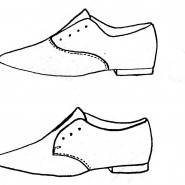
All shoe styles are variations of a comparatively small number of basic themes:
- The parts of a shoe can be grouped broadly into UPPER components and those which make up the sole and heel or BOTTOM components.
A simple upper consists of three basic parts:
- The VAMP, covering the toes and front or FOREPTRT of the shoe.
- Two QUARTERS, enclosing the back of the foot. (dia. 1)
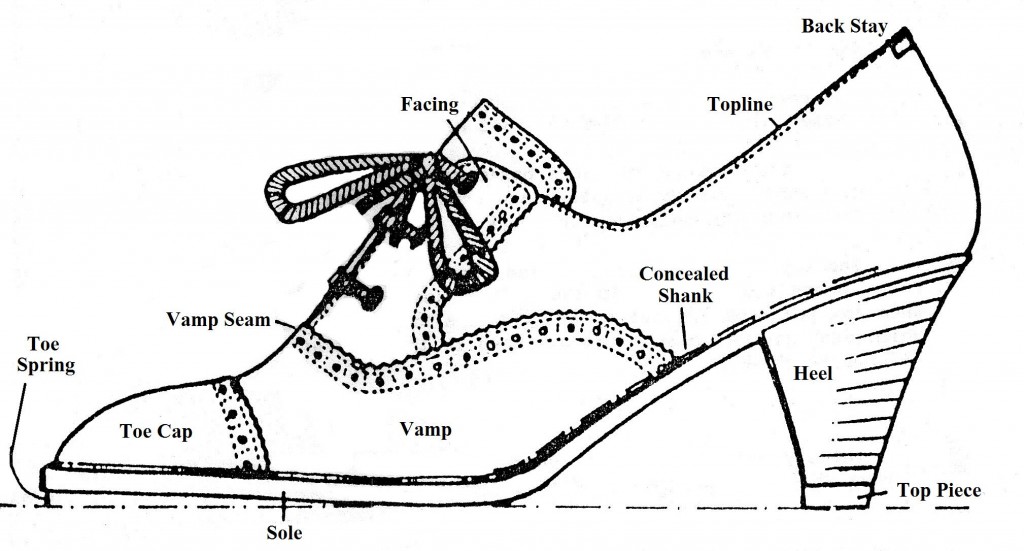
The top of the shoe around the opening for the foot is called the topline, where the upper meets the sole or insole is called the FEATHER EDGE. When the patterns are cut an additional allowance is added to the feather edge which enables the upper to be attached to the rest of the shoe. This is the LASTING ALLOWANCE.
The separate functions of vamp and quarters can be seen in a ladies evening shoe with an open middle section or WAIST.
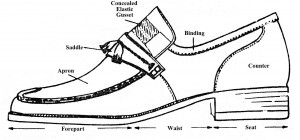
This type of shoe also shows the importance of the INSOLE to which the upper is lasted and to which the sole is attached, the insole is normally covered by a sock.
Usually, the vamp and quarters are joined together by a seam. This is often at the waist, but the position and method of seeming can vary and will alter the style of the shoe.
A basic COURT shoe could be cut up in four different ways:
- All in one piece (Whole cut).
- Two sides joined with a front or center seam.
- Two pieces with the vamp running the full length of one side of the shoe and joined to a single quarter on the inside (¾ cut).
- Three pieces, vamp and two similar quarters.
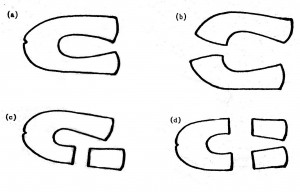
By considering the angle and manner in which the vamp is joined to the quarters, we can vary the style or theme further. The extent to which the vamp overlaps the quarters or the quarters overlap the vamp will cause differences in style and fit. For example, men’s lace shoes tend to fall into two categories:
OXFORD shoes have the vamp overlapping the quarters with the tongue being separately attached.
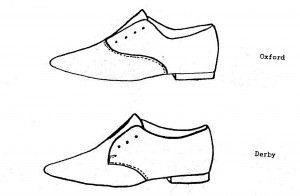
GIBSON or DERBY shoes with the quarters overlapping the vamp is generally includes the tongue.



